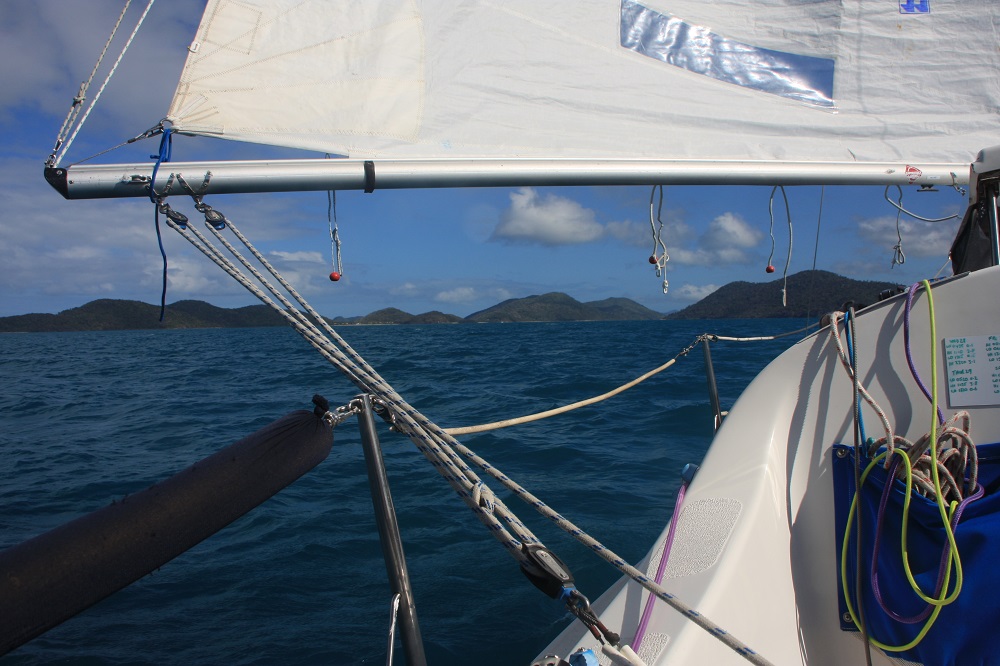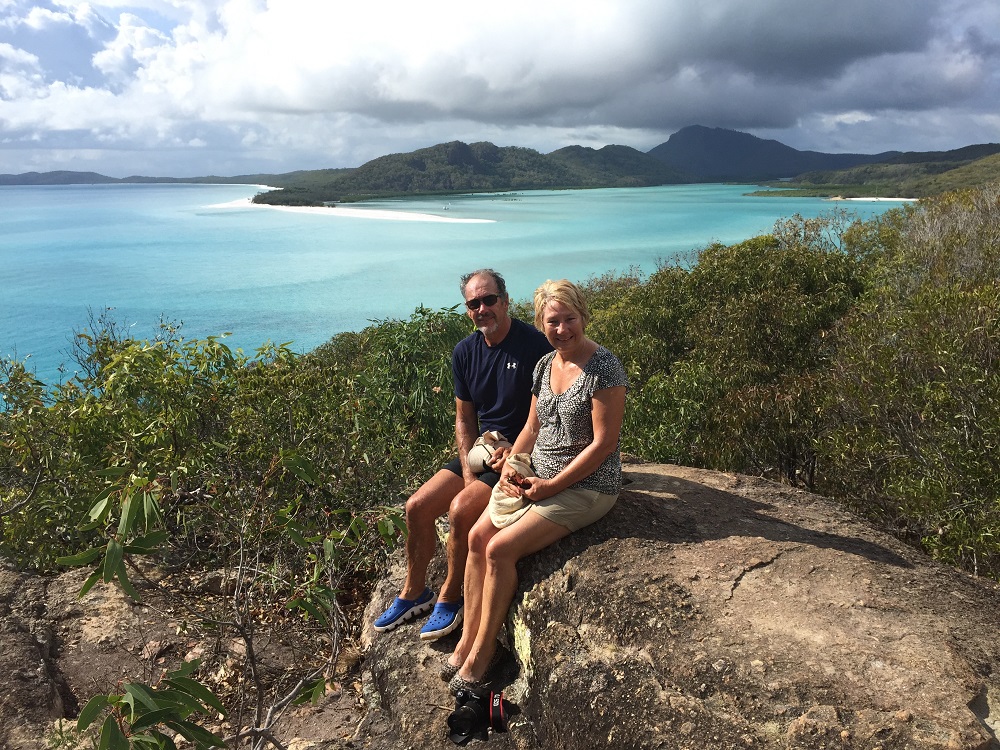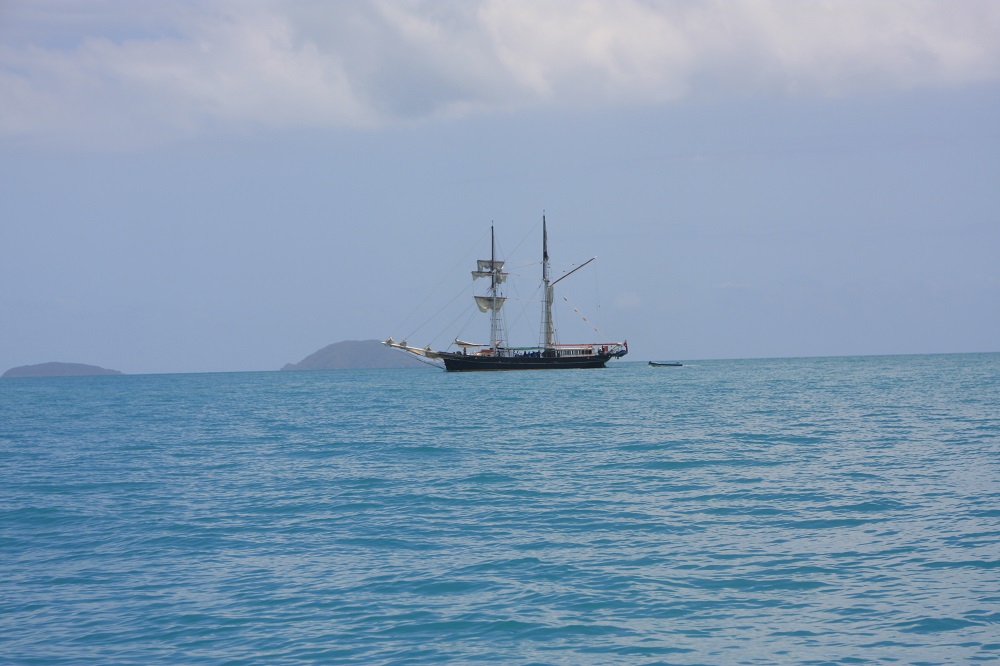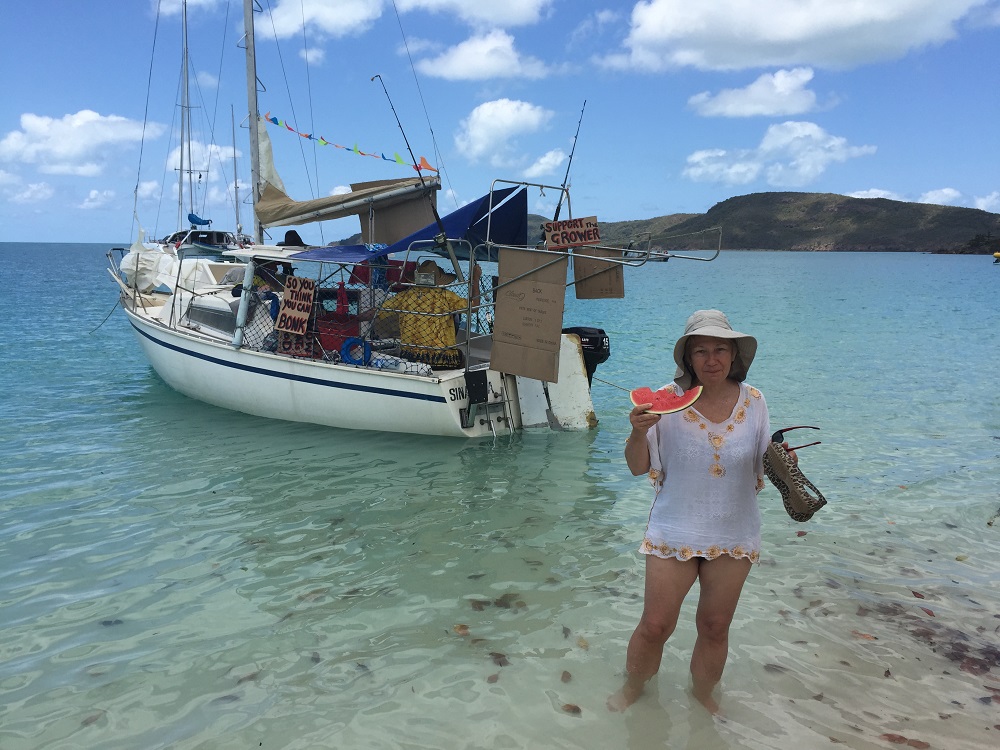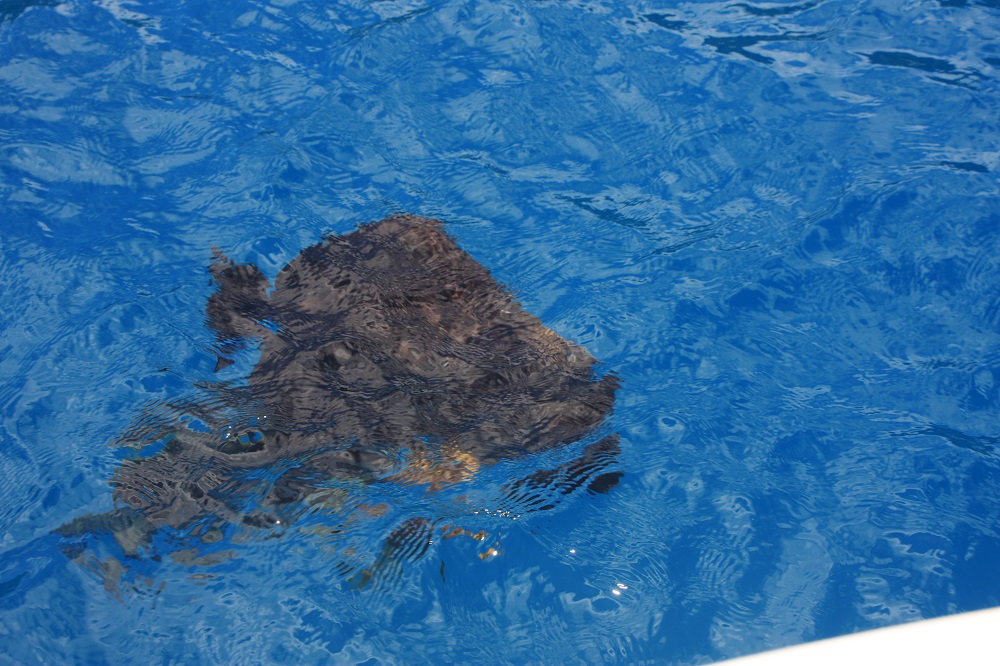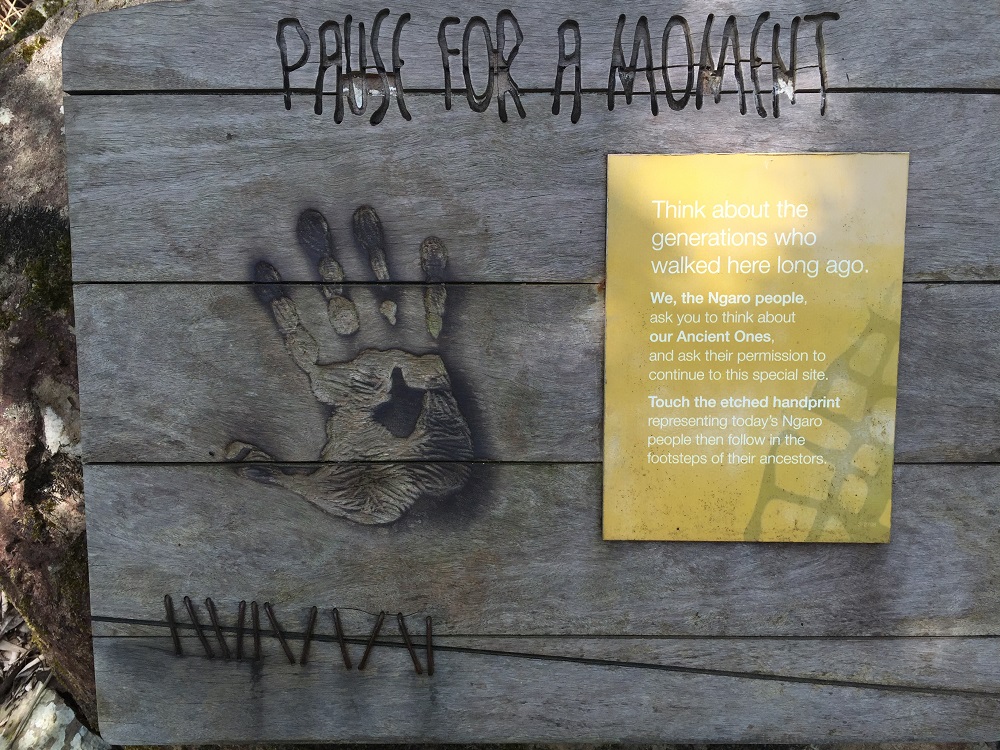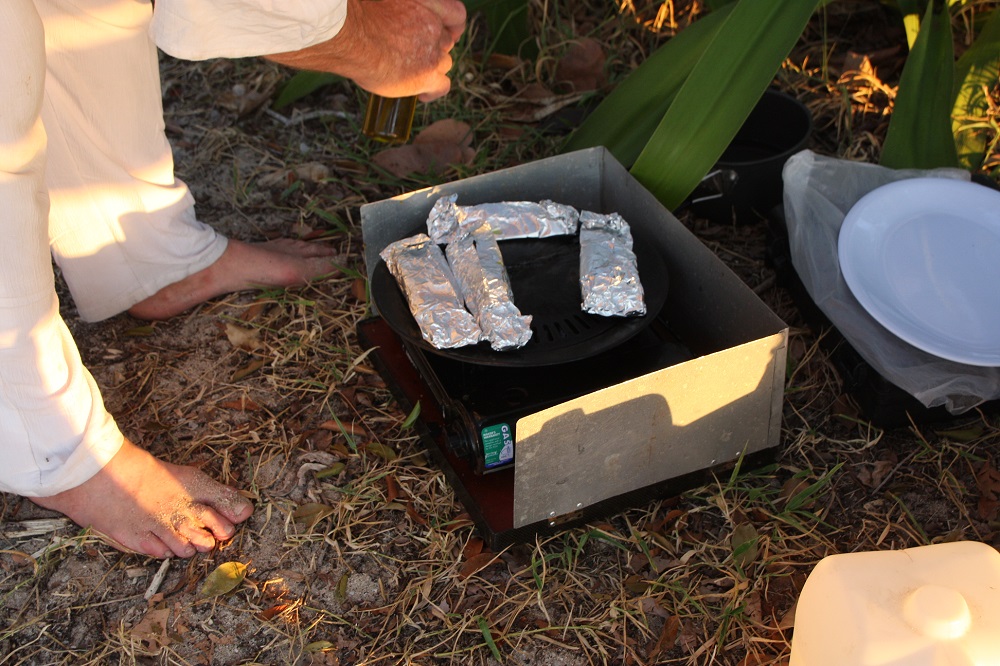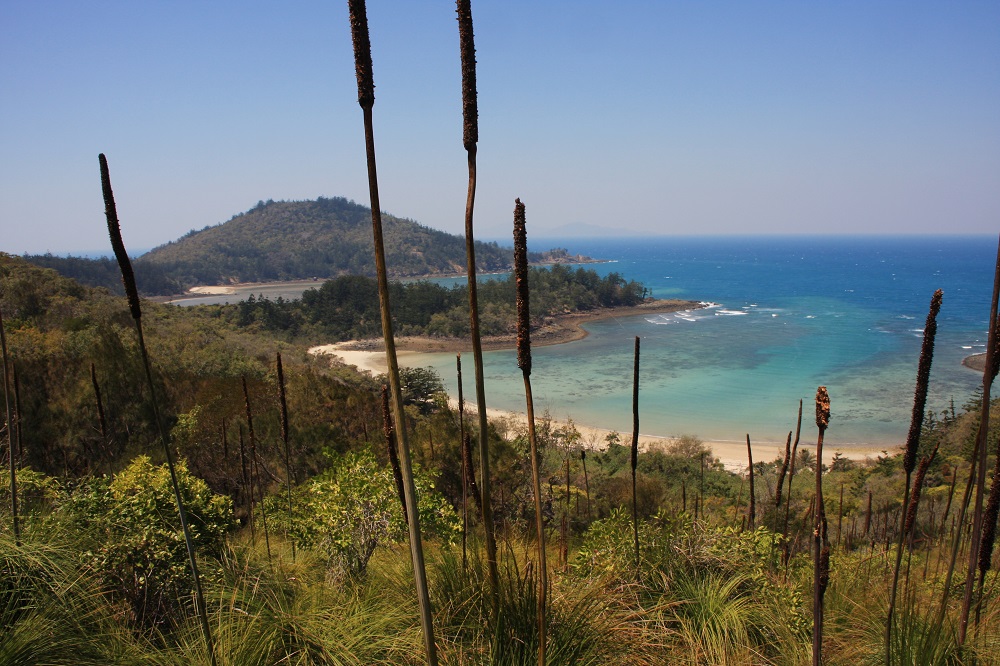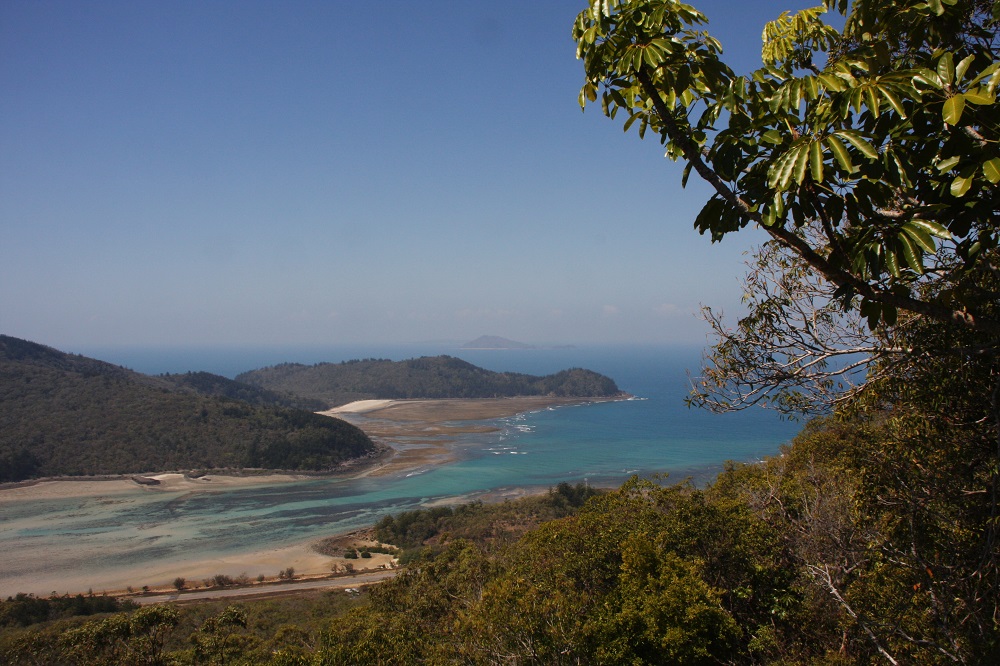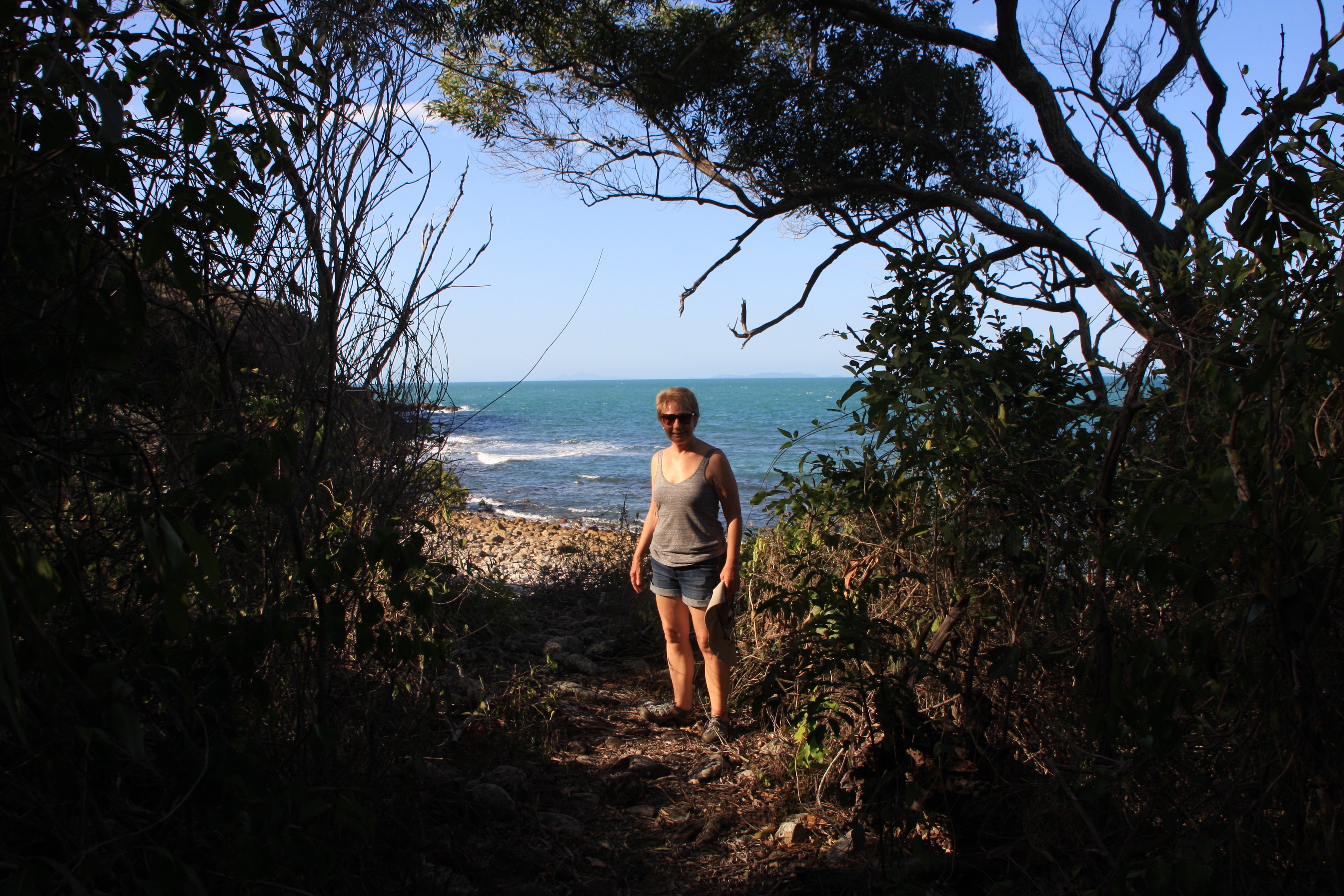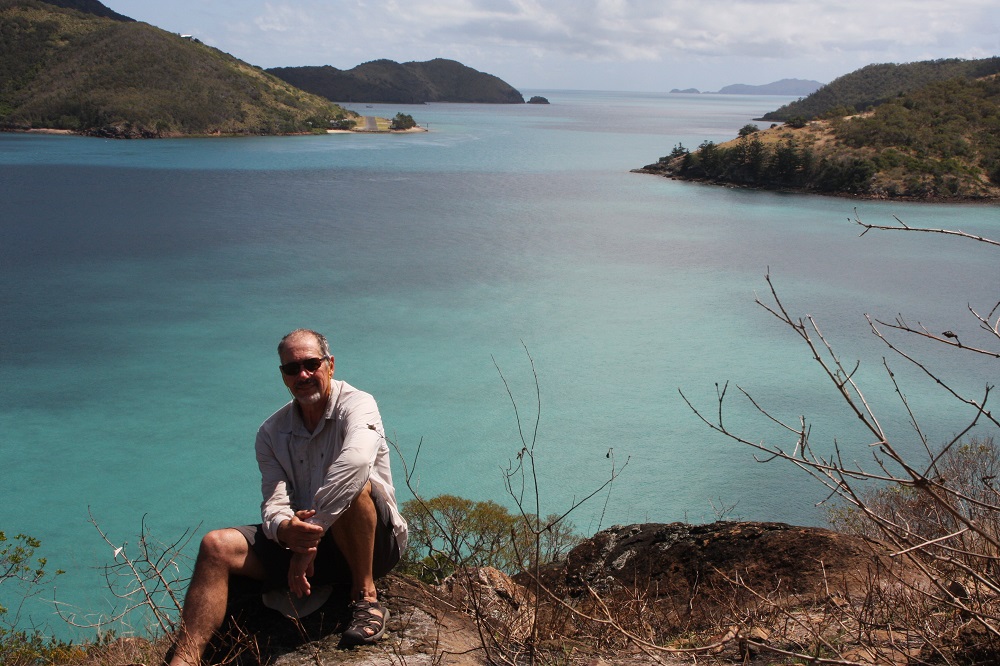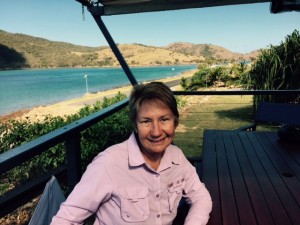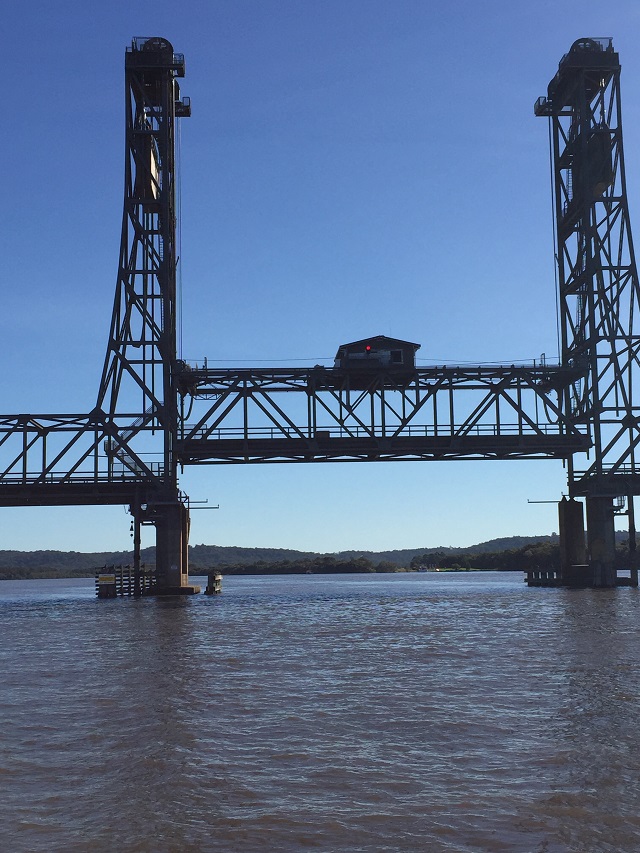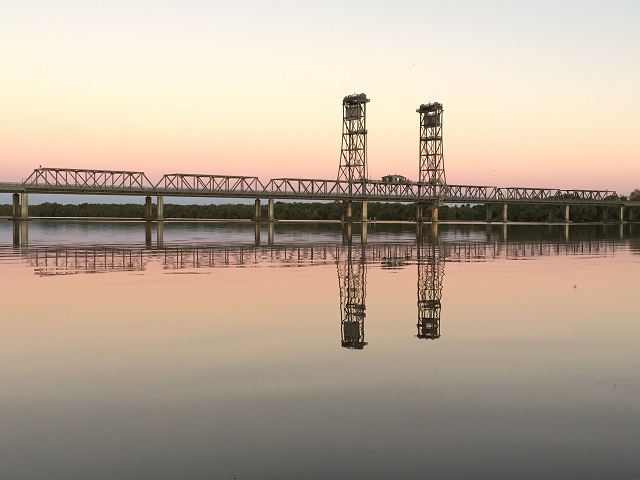Wednesday 4th November
With our newly repaired tender in tow and all provisioned up we headed for Palm Bay on Long Island. It was one of the best sails we’ve had having a good 10kn wind behind us and the tide with us we flew along at upwards of 5kn at times. Ray was on the tiller; we sat back and enjoyed the islands as they floated by.
The entrance to Palm Bay is via a narrow, dredged channel to a small ‘lagoon’ within the rocks and coral. Here there are 4 mooring buoys. It took us a while and a phone call to reception to finally see the small red and green buoys that delineate the channel. We picked up a mooring buoy then went ashore and brought back one of the stern lines they provide. This will prevent us from swinging as the tide and wind change, hitting the reef, and also keeps us bow to the swell, ensuring a calm night.
Times are changing on the islands. Our guide book said a mooring fee ($50/night) would cover the resort facilities including pool, showers, etc. Not so anymore – that’s an extra $25 each … bit much to pay for a swim and shower. Palm Bay resort is a pretty resort with small individual burés set in lush tropical gardens facing the beach. It’s all self-catering, with a nicely appointed kitchen and large open dining room for the guests to use.
Thursday
Today was a day of walking! We planned to walk the southern walks from Palm Bay first, then to Happy Bay, the resort just north of Palm Bay where we’d rest a while at the beachside cocktail bar we remembered from our last visit here, before continuing with the northern walks. It started so well as we walked along well-shaded tracks covered with a rich carpet of leaves to Sandy Bay, Fish Bay, Pandanus Bay and finally to the Happy Bay resort. This is where it all went wrong – it’s closed! Another ‘ghost resort’. We walked on, unsatiated, completing the island circuit, all up 15.5km. While there were no great peaks to assault with astounding views as we’ve experienced before, it was nevertheless an enjoyable walk around the island.
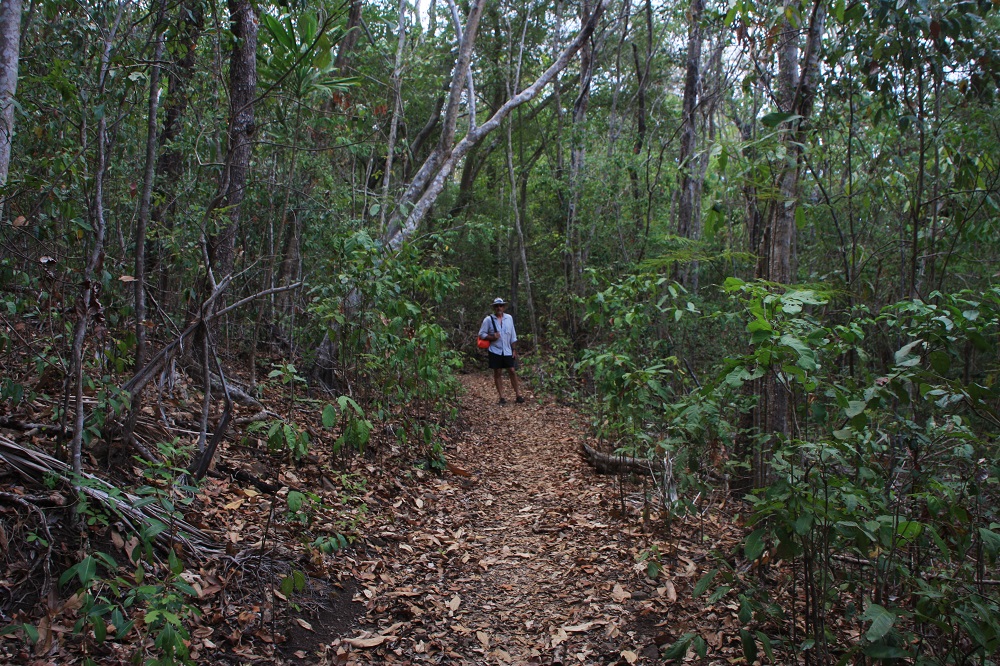
The islands are interlaced with these wonderful walks, and rarely do we ever meet anyone else out there doing it. They don’t know what they’re missing.
For more photos of our stay on Long Island CLICK HERE
Friday
Suitable anchorages for the persistent northerly winds are limited. We decided to cross the channel again and take our chances at some of the places we still want to see despite the winds. Today’s sail was quite long, but again very enjoyable for most of it. To quote the Skipper, ‘it got a little frisky there for a while’. We were close hauled all the way from Long Island up to Macona Inlet on Hook Island where we’ve anchored.
Saturday
Decided to stay today and explore Macona Inlet in the tender. I must say I think this is one of the best anchorages in the Whitsundays. It has several lovely sandy beaches to explore and swim from, is well protected from all winds except a direct southerly, and the surrounding hillside is beautiful, covered in trees of so many different colours. And it’s not generally as popular as the other protected anchorages.
The guide book said you could catch fish here without requiring much skill. We duly baited our hooks and tossed the lines out, then sat reading – undisturbed. Obviously a greater skill required then we possess.
We were hit by storms tonight – lots of rain and lightning and wind. The anchor held without giving an inch and we had no problems. It soon passed and we slept well.
Sunday
Off to Hill Inlet today on the eastern side of Whitsunday Island. But first we had to pass through Hook Passage. I remember many years ago visiting the Hook Island Underwater Observatory which was here in Hook Passage – but it’s now closed; apparently competition from the high speed catamarans which take tourists out to the reef for the real deal was too great. Pity, I really enjoyed it.
Hook Passage is another of the Whitsunday passages where you have to get wind and tide just so and our planning was good. The tidal flow tore us along at over 5 knots with not much wind to speak of. However the timing also coincided with the tourist boats passing through which added some drama, particularly coping with their wake.
To view a few photos of our trip to Hill Inlet CLICK HERE.
Due to lack of wind and a contrary tide as we headed south we motored all the way to Hill Inlet arriving about 2 and a half hours after full tide. This stunning inlet which is the northern boundary of Whitehaven Beach is very shallow – too shallow for keel yachts, but perfect for trailer sailers and catamarans. Sensibly you’d enter this narrow Inlet on the full tide, or at least a rising tide in case of running aground, but we didn’t have those options so in we went anyway. We wound up the keel and pulled the rudder up half way and I took up position standing at the bow trying to spot the deepest channel, waving the directions frantically to Steve. By good luck we didn’t run aground and anchored in a couple of meters of water on the southern side.

This is Hill Inlet. Not my photo – taken from a greater height than I could manage. Here you can see the size of the Inlet and the shifting sands we had to negotiate. Not complaining – top anchorage.
This was a fairly long trip today – about 15nm of motoring which isn’t relaxing.
Late afternoon we went for a walk along Whitehaven beach. Whitehaven is 7km of pure white sand and is officially rated as one of the top 5 beaches in the World. The sand is 98% silica and very fine and soft. This amazing beach is a bit of an enigma as locally there are no quartz rocks from which it could have been formed. Naturally it’s a major tourist attraction of the area drawing several hundred visitors a day, mostly to the southern section. Being part of a National Park it is entirely unspoilt by development, looking the same today as it did to the Ngaro aboriginal communities over the centuries. And credit to all concerned it recently was awarded the ‘Cleanest Beach in Australia’, well-deserved too from our observations.
By late afternoon the day trippers are all gone and the yachties today are elsewhere, Whitehaven being a poor anchorage in northerly conditions. We could hardly believe our good fortune – arguably the best beach in the entire world and Steve and I had it entirely to ourselves to walk. Surreal.

Aerial photo of Whitehaven looking north towards Hill Inlet. This is the stretch Steve and I walked. Again, not my photo.
Monday
South easterlies are forecast to arrive today. Rather than stay in Hill Inlet where we only have one opportunity a day to leave and therefore risk having to leave at a time when winds don’t suit us, we decided to move on today. But first a little sightseeing and some housework.
On the headland between Hill Inlet and Tongue Bay, the next bay north, National Parks has built a walking path to a lookout with magnificent views over the Inlet and Whitehaven. We took to the tender before breakfast to beat the crowds, enjoyed the views and photo opportunities then got caught in quite a long, heavy downpour. We were drenched!
Back at Top Shelf and now pushed for time we motored into shallower water and hopped overboard with snorkels and masks and our hull-cleaning equipment to give her another clean. Growth on the hull happens so quickly in these tropical waters. Hill Inlet has the same beautiful white silica sand as Whitehaven. The water is crystal clear over this lovely soft sand – it was quite visually striking and made hull-cleaning a pleasant pastime.
By the time we’d finished it was once more a couple of hours after high tide and we had to leave – still no breakfast. I repeated my demented arm-waving act standing on the bow and led us safely out to choppy waters. Fortunately not far to go – just to the southern end of Whitehaven – with southerly winds expected it’s now a good anchorage.
We managed to slip ourselves into the perfect location with the best protection on this magnificent beach and ate our breakfast at midday. Then we sat back and watched the comings and goings! Boats of every size everywhere, seaplanes flying in and out and even 5 identical helicopters arrived together and landed in formation on the beach.

Panorama of a few of the tourists at Whitehaven. Bit wonky as Top Shelf wouldn’t stay still for me. If you have very good eyesight you may be able to see 5 red helicopters on the beach.
By 4.30pm they’d all gone leaving us and 3 other yachts in peace for the night. We put out a stern anchor to the beach to prevent any rolling from the swell, cooked a delicious meal then sat in the cockpit for hours listening to beautiful music, staring at the sky, counting the shooting stars and sipping a chilled semillon. I hope this evening will remain in my memory for many years to come.
To see our photos from Hill Inlet and Whitehaven CLICK HERE.
Tuesday
I loved it so much here at Whitehaven that I momentarily considered suggesting to Steve that we stay here another night – then I remembered the tourists!! No, they didn’t fit into my idea of tranquility, and sure enough by 8.15am there were already 3 seaplanes landed, disgorging tourists onto my beach. Time to leave.
This time it’s Solway Pass, between Whitsunday and Hazelwood islands, to be traversed, but we’re getting pretty good at these narrow passes now. Even so with all conditions on our side, and motoring, the swirling waters swept us off course a few times. Once through up went the sails for a gentle, pleasant sail northwards through Fitzalan Pass to Henning Island where we picked up a buoy. Just short of Henning we had a near-catastrophe. We were running with the wind, which means the mainsail was nearly at right angles to the boat Steve, on the tiller, looked down to start the motor in preparation for mooring when the wind suddenly flipped the sail right across the boat to the other side where I was in the process of sitting back up after leaning over the side to rinse a bucket. It hit the top of my head – if I’d been any higher up we both shudder to think of the consequences. Accidents happen in split seconds.
That set the tone for the next few hours. The wind got up and made the Henning Island mooring uncomfortable, not that my headache and I had any interest in exploring. We dropped the mooring buoy and headed to Beach 25 (yep, that’s its name) just across the passage and a bit closer to Hamilton Island where we want to go tomorrow for reprovisioning. It was a hasty move as we were both still stressed from the ‘incident’ and it wasn’t until we were half way there that I took a good look at the chart – dangerous reef and very shallow water all around it. Sh*t! We carefully navigated in, anchored, then decided it was too swelly and potentially shallow here too, so moved again to Gulnare Inlet. Took the short-cut through a very narrow channel of ‘a bit deeper’ water between rocks and reefs before negotiating our way into this beautifully protected and calm, but very shallow at dead low tide (which it now was) inlet.
Once safely anchored the remaining alcoholhic beverages on board disappeared rapidly, but we did enjoy a beautiful evening.
